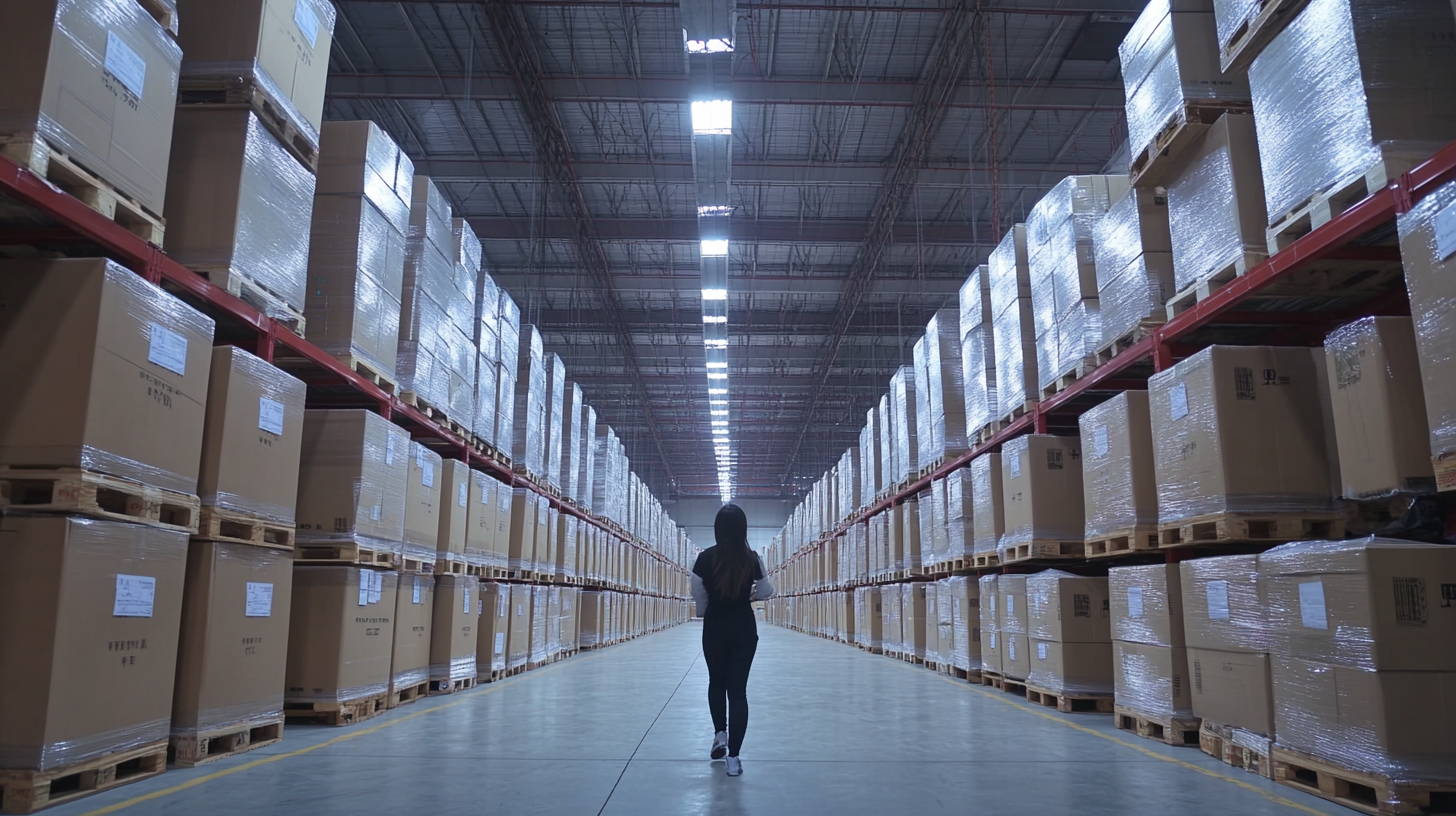- Home
- News
China's Manufacturing Resilience: Succeeding Amidst US-China Tariff Challenges with Best Electrical Check
In the face of escalating tariffs between the United States and China, the resilience of China’s manufacturing sector has come to the forefront, demonstrating an unexpected capacity for growth amidst adversity. Recent reports from the China National Bureau of Statistics indicate that despite the 25% tariffs on over $200 billion of Chinese goods, the Chinese manufacturing PMI has remained above the critical 50-mark, signifying expansion. The electrical equipment industry, in particular, has been a standout, with a projected growth rate of 8% in 2023 according to industry analyses. This sector plays a pivotal role in bolstering overall manufacturing resilience, as modernization and innovation in Electrical Check technologies are increasingly prioritized. By investing in automated processes and enhancing product quality, Chinese manufacturers are not only overcoming tariff challenges but are also positioning themselves as strong contenders in the global market. Through strategic adaptations, they continue to thrive, highlighting the enduring strength of China’s manufacturing landscape.

China's Manufacturing Sector: Adapting to Tariff Pressures
China's manufacturing sector has demonstrated remarkable adaptability in the face of ongoing tariff pressures from the United States. As trade tensions escalate, many manufacturers have been forced to rethink their strategies and recalibrate their operations to maintain competitiveness. By investing in advanced technologies and automation, Chinese companies are not only enhancing efficiency but also reducing dependency on high-cost imports. This proactive approach positions them to combat the adverse effects of tariffs while sustaining production levels.
Moreover, the emphasis on innovation and quality control has become paramount. Industries are increasingly adopting stringent quality assurance practices, such as implementing best electrical checks, to comply with international standards and mitigate risks associated with tariffs. This focus not only protects profit margins but also bolsters the global reputation of Chinese goods. As a result, China's manufacturing resilience is not merely about weathering external pressures but is indicative of a broader transformation toward a more robust and competitive industrial landscape.
Innovative Strategies Driving Growth Despite US-China Trade Tensions
The ongoing US-China trade tensions have posed significant challenges for manufacturers in both countries. However, China has demonstrated remarkable resilience, employing innovative strategies to navigate these obstacles. According to a recent report by McKinsey & Company, nearly 80% of Chinese manufacturers have accelerated their adoption of digital technologies as a means to enhance operational efficiency and reduce costs. This shift not only mitigates the impact of tariffs but also positions these companies for long-term growth in an increasingly competitive market.
One notable strategy has been the focus on automation and robotics. A study by the International Federation of Robotics indicates that China's industrial robot installations increased by over 20% from 2021 to 2022, reinforcing the sector's capacity to maintain productivity amid external pressures. Furthermore, manufacturers are diversifying their supply chains, with many shifting their sourcing from the US to Southeast Asian countries. This adaptability allows Chinese manufacturers to sustain their competitive edge while minimizing the effects of tariff increases. With a commitment to innovation and strategic planning, China's manufacturing sector continues to thrive in a challenging global environment.

The Role of Technology in Strengthening China's Manufacturing Resilience
In the face of escalating US-China tariff challenges, China's manufacturing sector exhibits remarkable resilience, largely thanks to advancements in technology. The integration of cutting-edge technologies in production processes not only enhances efficiency but also enables manufacturers to quickly adapt to shifting market demands. Automation, artificial intelligence, and data analytics are transforming traditional manufacturing paradigms, allowing firms to streamline operations and reduce costs while maintaining high-quality output.
Moreover, the emphasis on supply chain resilience has prompted companies to reassess their strategies. By prioritizing flexible and robust supply chains, businesses can navigate global disruptions more effectively. The realization that intellectual property protection plays a pivotal role in enhancing supply chain resilience further adds a layer of strategic importance. Companies that actively safeguard their innovations are better positioned to compete on the global stage, ensuring their operations remain secure even amid geopolitical tensions. Thus, as China continues to harness technology to bolster its manufacturing sector, it stands as a testament to the adaptive capabilities of an industry poised for growth despite external challenges.

Key Industries Thriving Under Tariff Challenges: A Closer Look
China's manufacturing sector has demonstrated remarkable resilience in the face of US-China tariff challenges, particularly in key industries such as electronics and automotive. According to a recent report from the China Association of Automobile Manufacturers, vehicle production in China rose by 5.4% in the first half of 2023, despite ongoing tariff pressures. This growth is attributed to local manufacturers adapting swiftly to market needs and increasing investment in innovative technologies. The rise in electric vehicle (EV) production, with over 2 million units sold in the first three quarters of 2023, showcases how Chinese firms have capitalized on global sustainability trends while mitigating tariffs' impacts through domestic supply chains.
Moreover, the electronics industry remains a stronghold for China's manufacturing prowess. A study by the China Electronics Chamber of Commerce points to a 10% increase in smartphone exports in mid-2023, driven by the booming demand for 5G technology. Companies like Huawei and Xiaomi have redirected their focus on the domestic market and emerging markets, successfully softening the blow from tariffs imposed by the U.S. This proactive approach to diversifying customer bases and enhancing production efficiency has become a cornerstone for the industry’s growth, allowing them to thrive despite external economic pressures.
Future Outlook: Sustainability and Growth in China's Manufacturing Landscape
China's manufacturing sector continues to showcase remarkable resilience in the face of ongoing US-China tariff disputes. A key aspect of this resilience lies in China's commitment to sustainability and growth. As manufacturers adapt to new trade realities, they are increasingly incorporating sustainable practices into their production processes. This shift not only helps to mitigate the effects of tariffs but also aligns with global trends towards reduced carbon footprints and environmentally friendly practices. Companies are investing in energy-efficient technologies and sustainable materials, ensuring that they remain competitive in an evolving market.
Looking to the future, the landscape of China's manufacturing will likely be shaped by innovation and adaptation. By focusing on sustainable strategies, manufacturers can tap into emerging markets that prioritize green initiatives. This not only opens up new revenue streams but also enhances brand loyalty among consumers increasingly concerned about environmental impact. As China navigates the complexities of international trade, its manufacturing sector's ability to foster sustainable growth will be critical in maintaining global competitiveness, proving that resilience can indeed pave the way for a sustainable future.
| Year | Manufacturing Growth Rate (%) | Major Exports (Billion USD) | Tariffs Impact Assessment | Investment in Sustainability (Billion USD) |
|---|---|---|---|---|
| 2020 | 2.3 | 2401.0 | Moderate | 10.4 |
| 2021 | 8.1 | 2662.0 | High | 15.3 |
| 2022 | 3.9 | 2400.5 | Severe | 20.1 |
| 2023 | 5.7 | 2550.0 | Moderate | 25.0 |
